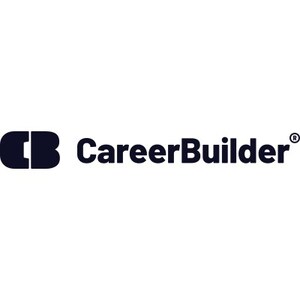U.S. Hiring to Stay on a Steady Course, According to CareerBuilder's Q2 Job Forecast
Hiring In Manufacturing is Expected to Outpace the National Average
CHICAGO, April 3, 2014 /PRNewswire/ -- The U.S. jobs outlook for the second quarter is akin to last year's forecast, but certain industries are expected to outperform the national average for hiring. The number of manufacturing employers planning to add full-time, permanent headcount increased three percentage points over Q2 2013 and beat the national average for this year's forecast by seven percentage points. Information Technology, Financial Services, Professional and Business Services and Health Care are also among industries projected to lead in job creation.
View full report: http://www.careerbuildercommunications.com/pdf/careerbuilder_q22014_forecast.pdf
"While employment has not yet reached an ideal level, the U.S. is moving closer to the tipping point for substantial job growth," said Matt Ferguson, CEO of CareerBuilder and co-author of The Talent Equation. "The economy is expanding, the housing market is recovering, consumer confidence is up and companies are starting to tap into cash reserves to invest – these are all good signs. As these trends strengthen, we expect hiring to hold steady in the second quarter and gain ground in the back half of the year."
The national survey was conducted online by Harris Poll on behalf of CareerBuilder from February 10 to March 4, 2014, and included a representative sample of 2,138 hiring managers and human resource professionals across industries and company sizes.
Hiring in Q1 2014
In a previous survey completed in December 2013, 27 percent of employers planned to hire full-time, permanent employees in the first quarter of 2014. The number of employers who actually hired full-time, permanent staff was 29 percent, up from 28 percent in the same period last year.
Eleven percent decreased headcount, down from 12 percent last year. Fifty-nine percent said there was no change in their number of full-time, permanent employees while 2 percent were unsure.
Hiring in Q2 2014
Looking ahead, 26 percent of employers plan to add full-time, permanent staff in the second quarter, on par with last year. Given that employers historically have been more conservative in estimates than actual hiring activity, the number may come in higher at quarter's end.
Eight percent of employers expect to downsize staff, down from 9 percent last year. Sixty-one percent anticipate no change while 5 percent are undecided.
The top five industries that are expected to surpass the national average for adding full-time, permanent staff in the second quarter include:
- Information Technology – 34 percent of hiring managers
- Financial Services – 34 percent
- Manufacturing – 33 percent
- Health Care1 – 28 percent
- Professional and Business Services – 28 percent
Temporary Hiring
Temporary employment is showing a slight improvement over last year's projections. Thirty-three percent of employers plan to hire temporary or contract workers in the second quarter, up from 32 percent in 2013. Twenty-six percent are planning to transition some contract or temporary staff into permanent employees in the second quarter, up from 24 percent last year.
Hiring By Company Size
Hiring among small businesses is lso expected to grow marginally compared to the second quarter last year:
- 50 or fewer employees – 18 percent plan to add full-time, permanent staff in Q2, up from 17 percent last year; those reducing headcount stayed at 6 percent
- 250 or fewer employees – 22 percent plan to add full-time, permanent staff in Q2, up from 21 percent last year; those reducing headcount decreased from 7 percent last year to 6 percent
- 500 or fewer employees – 23 percent plan to add full-time, permanent staff in Q2, up from 22 percent last year; those reducing headcount decreased from 8 percent last year to 6 percent
- More than 500 employees – 32 percent plan to add full-time, permanent staff in Q2, down from 33 percent last year; those reducing headcount increased from 10 percent last year to 11 percent
Compensation
Thirty-one percent of employers anticipate no change in salary levels in the second quarter compared to the same period last year. Forty-one percent expect there will be an increase of 3 percent or less. Nineteen percent expect their average changes will be between 4 and 10 percent and 2 percent predict an increase of 11 percent or more. Three percent anticipate a decline in salaries and 5 percent are undecided.
1 Health Care organizations with 50 or more employees
Survey Methodology
This survey was conducted online within the U.S. by Harris Poll on behalf of CareerBuilder among 2,138 hiring managers and human resource professionals ages 18 and over (employed full-time, not self-employed, non-government) between February 10 and March 4, 2014 (percentages for some questions are based on a subset, based on their responses to certain questions). With a pure probability sample of 2,138, one could say with a 95 percent probability that the overall results have a sampling error of +/- 2.12 percentage points. Sampling error for data from sub-samples is higher and varies.
About CareerBuilder®
CareerBuilder is the global leader in human capital solutions, helping companies target and attract great talent. Its online career site, CareerBuilder.com®, is the largest in the United States with more than 24 million unique visitors and 1 million jobs. CareerBuilder works with the world's top employers, providing everything from labor market intelligence to talent management software and other recruitment solutions. Owned by Gannett Co., Inc. (NYSE:GCI), Tribune Company and The McClatchy Company (NYSE:MNI), CareerBuilder and its subsidiaries operate in the United States, Europe, South America, Canada and Asia. For more information, visit www.careerbuilder.com.
Media Contact
Jennifer Grasz
773-527-1164
[email protected]
http://www.twitter.com/CareerBuilderPR
SOURCE CareerBuilder
WANT YOUR COMPANY'S NEWS FEATURED ON PRNEWSWIRE.COM?
Newsrooms &
Influencers
Digital Media
Outlets
Journalists
Opted In





Share this article